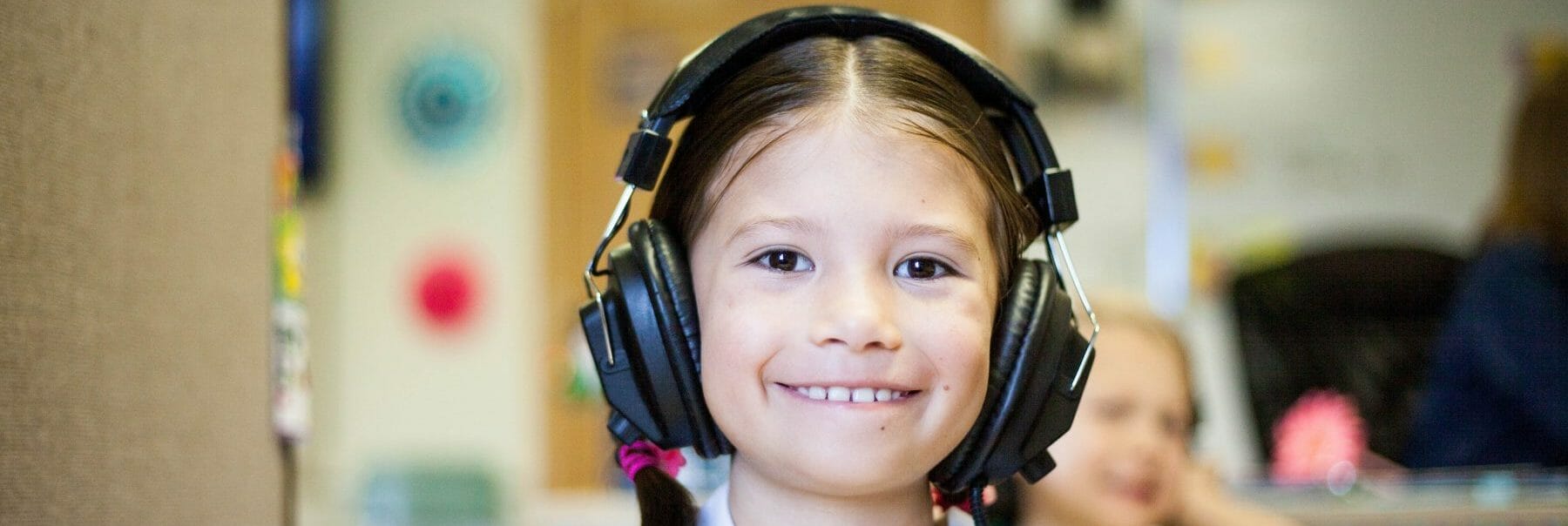
Articles
Editor’s Picks
K-12
6 Arguments For and Against Virtual Charter Schools
By Henry Kronk
October 21, 2018
Virtual charter schools remain a contentious issue in American education. Known alternatively as online academies, or cyber schools, they deliver 100% of their education remotely. Learners might get extensive face time with their teacher and peers through teleconferencing, or they might get little to none at all. For many families, these schools make a lot of sense. Issues such as bullying and school shootings give parents a reason to keep the kids safe at home. Other unique student populations, such as those with mobility issues, those with individualized education plans, top-tier athletes, those with crippling social anxiety, and many others find a private learning environment to be better than the classroom. So: why are virtual charter schools controversial? Why are they growing in popularity? What are the political dimensions of this issue? The following will give a snapshot of virtual charter schools, followed by a summary of the three best arguments for and against.
Snapshot
Despite the attention they receive, virtual charters are still a decidedly unpopular option for schooling in the U.S. Out of roughly 50 million K-12 American learners during the 2015-16 school year (the last for which data is available), just 278,511 attended a virtual charter. Another 36,605 attended a blended program, which mixes online and in-person learning.
But virtual charter schools have established strong growth since they became viable in the early 2000s. One might argue that these schools have only recently become viable for the public, with technological developments such as widely available broadband internet, live video streaming software that can handle 100+ simultaneous users at high quality, affordability of cloud computing, the emergence of user friendly virtual collaborative spaces, and more. As education-supporting technology continues to improve and become more affordable, it will be interesting to see how virtual charter enrollment changes.
As charter schools, these online institutions are run by private companies that have secured a charter from their local government. States vary when it comes to what this process requires. A good many virtual charters are homegrown local businesses. But two businesses run somewhere over 120 charter schools in 29 different states that, together, enroll over half of the total virtual student body. These are K12 Inc. and Connections Academy, the latter of which is owned by the U.K.-based education giant, Pearson.
Because of their organization, virtual charter schools generally draw support from pro-business conservatives and libertarians while meeting opposition from liberals. Advocates of school choice—who tend to be conservative—form a more concentrated support group for virtual charters in the belief that a parent should be able to send their kid to any school they should choose.
As a final point, very little is known about virtual charter schools. Oversight varies state-by-state, but 27 states have no legislation on the books that allows closure of public charters due to poor academic performance. In 24 states, there is no oversight specific to virtual charters. Due to these and other factors, many studies simply do not take the whole virtual charter school student body into account. Interest groups on both sides of the virtual charter school debate have called for greater oversight of the sector.
Arguments For Virtual Charter Schools
They Help Vulnerable Learners
Advocates for virtual charter schools frequently detail how they serve the needs of minority student populations. Virtual charter school learners all share a common denominator of not fitting in for one reason or another.
A 2018 report from the Oklahoma Statewide Virtual Charter School Board found that 41% of learners within the state virtual system left their old brick-and-mortar schools because they were bullied.
In the words of Commonwealth Charter Academy CEO Maurice Fleury, speaking with Stephanie Hacke of Public Source, “They’re coming to us. A child is not born and a parent looked at them as a 3-year-old and said, ‘I can’t wait until they get to kindergarten and I can send them to a cyber school.’ Parents come to us because something is not working.”
One often also hears of virtual charter schools serving non-neurotypical learners with individualized education plans for whom school is inherently incompatible.
Looking forward to the main ‘against’ argument—which is that virtual charters earn terrible test scores—many proponents argue that virtual students shouldn’t be judged by the system that failed them. At least they’re learning in school. Something is better than nothing.
They’re More Flexible
In today’s connected age, working remotely has become incredibly popular for American professionals. And for those with families, life on the road, extended travel, or simply a day full of activities can be possible with virtual learning.
For example, 17-year-old Red Gerard, who took home a gold medal in snowboarding slopestyle at Pyeongchang last winter, hasn’t attended a brick-and-mortar school since he was 13. Virtual classes allowed Gerard—a native of Rocky River, OH—to live on the road with his family, spending a good deal of time in snowboarding in the Rockies.
“I’ll Send My Kid Where I Want”
There’s no denying the American libertarian spirit. A good many people support the existence of virtual charter schools in response to the federal government overstepping their bounds. After all, it was famous libertarian and 20th century economic giant, Milton Friedman who penned the 1955 essay “The Role of Government in Education,” which proposed the creation of a school voucher program.
As Reason’s Nick Gillespie put it, school choice gets society closer to the Libertarian Moment, or “a time of increasingly hyper-individualized, hyper-expanded choice over every aspect of our lives…a world where it’s more possible than ever to live your life on your own terms.”
Arguments Against
Virtual Charters Don’t Effectively Teach Students
While information regarding virtual charter schools is hard to come by, the small body of data that exists is unequivocal on at least one point: they deliver awful academic results. This is confirmed routinely by state data. Recent examples include Indiana, New Mexico, North Carolina, and Nevada. In each of these cases and many others, it seems clear that, while a few virtual charter schools are on par or even ahead of brick-and-mortar analogues, most do poorly.
Of the five virtual charters operating in Indiana last year, for example, four received a grade of ‘F.’
When discussing this argument, many cite a 2015 study conducted by the Stanford University-affiliated Center for Research on Education Outcomes. The study came out with numerous compelling data points. As one participating researcher put it, attending a virtual charter “would equate to a student losing 72 days of learning in reading and 180 days of learning in math, based on a 180-day school year.”
The CREDO researchers used a somewhat controversial method to reach this conclusion. It involves identifying a virtual student and matching them to a demographically similar student at a brick-and-mortar school as a control, and then measuring the differences in their growth. As Matt Barnum writes for The 74, “Let’s say there are two students, Jamie and Mayra, who appear, on paper, to be similar: they have the same prior test scores, the same poverty level, the same gender, etc. But Jamie ends up attending an online charter because she gets sick and can’t come into a physical school everyday. While she’s at the virtual school, her achievement drops significantly relative to Mayra — not because of the quality of her school, but because she’s ill. The CREDO results would likely not be able to control for that and would pin the blame for low achievement on the online school.”
Indiana Senate Appropriations Chair Ryan Mishler provided Chalkbeat with a response: “If they’re not doing well, if they’re not graduating, how good is it for them?”
Virtual Charters Are Perpetuating Economic and Social Segregation
Researchers and journalists have begun to report a growing phenomenon with virtual charters. The story typically goes like this: facing a deficit, states, counties, or districts cut funding to education to such a degree that schools cannot properly function. Sometimes, they must close outright. Students are left with the choice to travel further to other districts or to attend virtual charter schools. In the most nefarious allegations, this is done with full knowledge of the results.
Professor Noliwe Rooks documented this in her 2017 book Cutting School: Privatization, Segregation, and the End of Public Education:
“In Pennsylvania, Michigan, South Carolina, Ohio, and Florida, poor students from rural areas as well as those in underfunded urban schools that primarily educate students who are Black and Latino today face a new response to the question of how to solve the riddle of race, poverty, and educational underachievement. Increasingly, despite little supporting evidence, a growing number of states and local school districts no longer believe that the solution is merely about infrastructure, class size, funding, or hiring more teachers. In states with high levels of poverty and “hard to educate” Black and Latino students, virtual schools are on the rise. Such schools are not growing nearly as fast in school districts that are white and relatively wealthy, nor are they the educational strategy of choice in most private schools. As much a business strategy as one promoting learning, virtual education allows businesses to profit from racial inequality and poverty. Sadly, this particular cure to what ails our education system more often than not exacerbates the problems.”
Virtual Charters Take Local Taxpayer Dollars And Send them Out of State
Looking at state appropriations on a per student basis, this is the case more often than not. K12 Inc. and Connections Academy run or participate in most virtual charter schools in the U.S. Other companies might operate a handful over a wide area. There is certainly a large minority of virtual charter schools that operate just one institution and are based at least within the same state. But more often-than-not the money afforded to individual students is used partially to teach, partially to advertise and market their services, and perform other business functions. The profits of these funds provided by local taxpayers will never recirculate through the community from whence they came.
Featured Image: Ben Mullins, Unsplash.









[…] is the Lambda School’s summer program. As reported on eLearning Inside earlier this year, the Lambda Schools’ Summer Hackers scholarship for women enables women, including undergraduate students, to complete a Lambda program free of […]